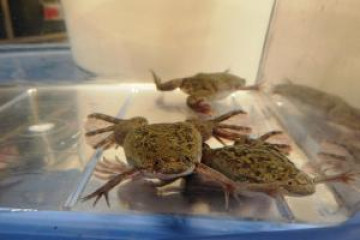Project grant
Non-invasive identification of individual Xenopus by photography and image processing

At a glance
Completed
Award date
October 2007 - November 2009
Grant amount
£59,194
Principal investigator
Professor Matthew Guille
Co-investigator(s)
- Mr Mark Dunsford
- Professor Elizabeth Jones
Institute
University of Portsmouth
R
- Refinement
